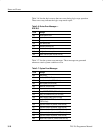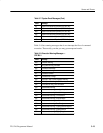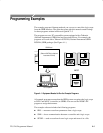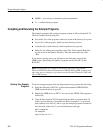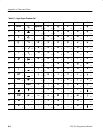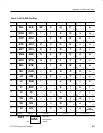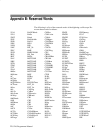
Programming Examples
TLS 216 Programmer Manual
4–3
4. Run the program by typing the program name.
H To run meas.exe, type: meas
H To run comm.exe, type: comm
H To run getgrp.exe, type: getgrp
H To run cursor.exe, type: cursor
H To run tl.exe, type: tl
To make an executable for any example from the Sources directory, perform the
following steps:
1. Install QuickC. Select the LARGE memory model. Be sure to set up your
path so DOS can access the QuickC directory.
2. Install the Tektronix S3FG210 (National Instruments GPIB-PCII/IIA) GPIB
board and drivers to your hard disk (assumed to be drive C).
3. Identify the GPIB device as DEV1. You can use the IBCONF.EXE program to
do this task.
4. Copy the files from the examples disk to your hard disk. For example, to
create a special directory (assumed to be named “examples”) on your hard
disk (assumed to be drive C) and to copy the example programs (assumed to
be in drive B), make drive C your current drive and type:
mkdir examples
cd examples
copy B:\quick-c\*.* .
5. Copy the files DECL.H and MCIB.OBJ from your Tektronix S3FG210
(National Instruments GPIB-PCII/IIA) GPIB drivers directory to the
directory you created in step 4. For example, to copy the GPIB drivers to the
current directory (assumed to be in C:\examples from step 4), type:
copy \gpib-pc\decl.h .
copy \gpib-pc\mcib.obj .
6. To compile and link your TLS sample C programs, type the command
associated with the example program you wish to compile and link:
H To compile and link meas.c, type: nmake meas.mak
H To compile and link comm.c, type: nmake comm.mak
H To compile and link getgrp.c, type: nmake getgrp.mak
H To compile and link cursor.c, type: nmake cursor.mak
Compiling And Linking
Your Example QuickC
Programs





